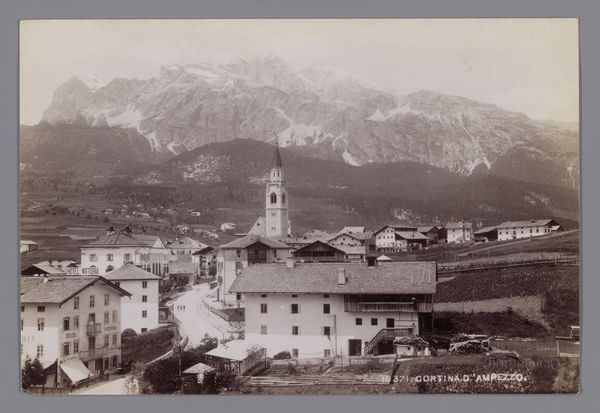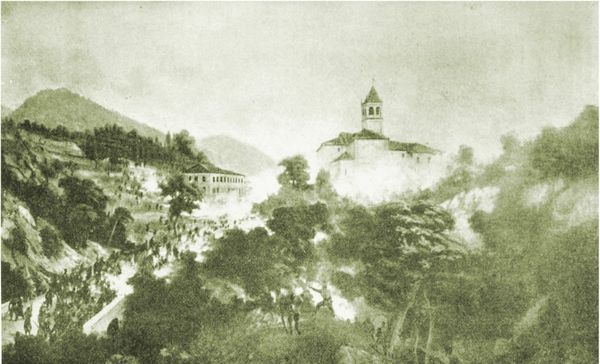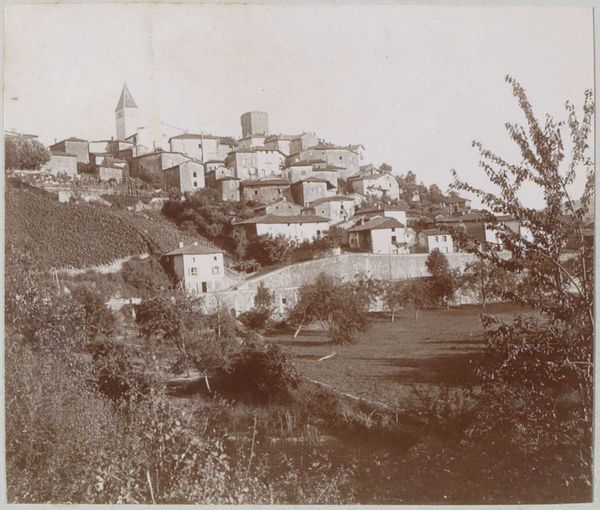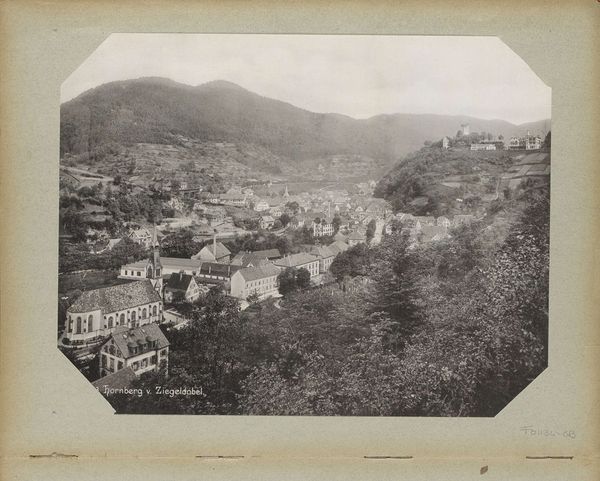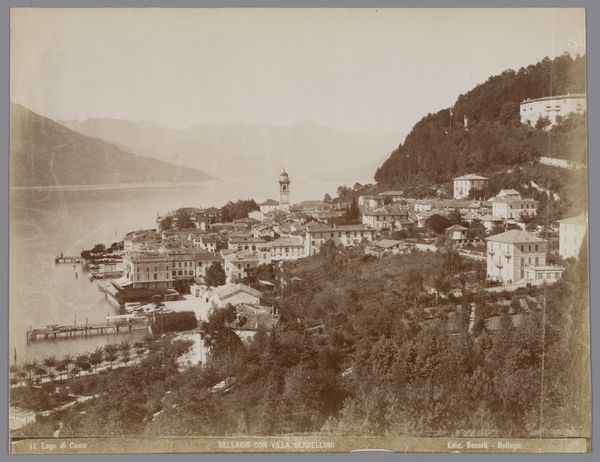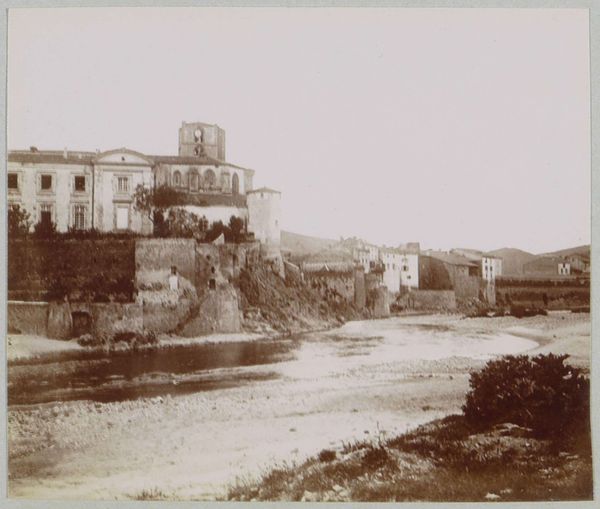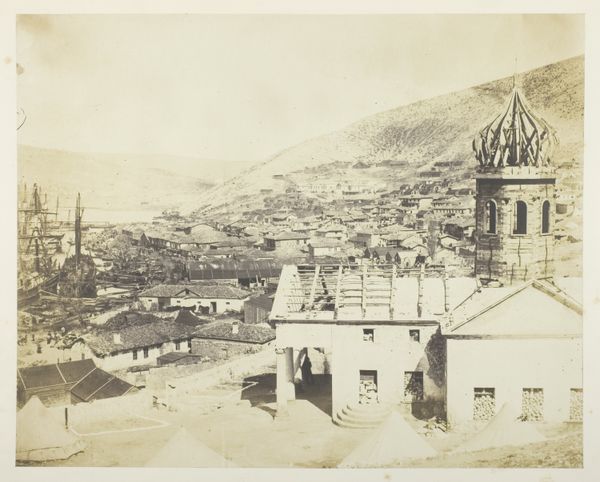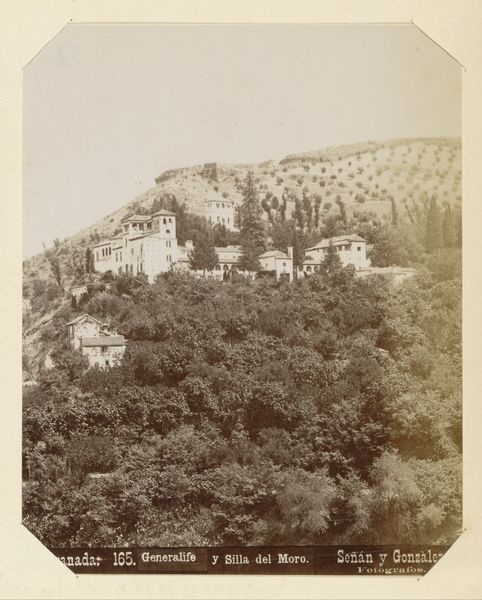
print, photography
#
pictorialism
# print
#
landscape
#
photography
#
cityscape
#
watercolor
Copyright: Rijks Museum: Open Domain
Curator: Immediately I'm struck by a somber moodiness; it has this wonderfully muted quality, almost like a faded memory. Editor: Indeed. This is a photographic print titled "Prentbriefkaart aan Philip Zilcken", and we believe it was created before 1925. It appears to be done in the Pictorialist style, resembling something like a washed watercolor, with an emphasis on landscape and cityscape elements. Curator: Pictorialism makes sense, given the way it seems to intentionally soften reality, heightening its emotional resonance through that atmospheric blurring. Note how that bell tower piercing through the scene offers a spiritual focal point – anchoring the urban landscape with a symbol of faith and collective time, marking life’s rhythms through its chimes, no? Editor: I can certainly see that interpretation. What grabs me, however, are those rooftops and tiled surfaces. Look closely, and you observe how much craft went into those details. Every ridge and weathering mark testifies to the lives lived beneath them and labor to keep the elements out. What material conditions must have been at play when constructing a village in such a manner? Curator: A strong community feeling and a shared destiny shaped through living together, which comes through. Yet I also discern an element of loneliness and nostalgia here, accentuated by that ethereal glow of filtered light... almost suggesting a dream. Editor: Dreams need tangible form too. Think of the materials at hand—clay, stone, wood fashioned by skilled hands with locally sourced goods. These humble materials compose an actual landscape upon which daily life unfolds: consider each building block representing someone’s efforts—literally brick by brick. Curator: All the same, the image’s appeal comes less from this material construction you detail and far more from this emotional atmosphere woven throughout the town; these tangible components are but conduits through which cultural memory emerges – almost hinting that reality blurs and merges into our collective consciousness eventually... Editor: Agreed to a point, though even 'collective consciousness' comes out of material encounters within architectural constructs; therefore, even ethereal things need that essential physical aspect as we witness its transformation over time within this unique photographic style – which has shaped meaning alongside hands and tools that shaped towns…
Comments
No comments
Be the first to comment and join the conversation on the ultimate creative platform.

